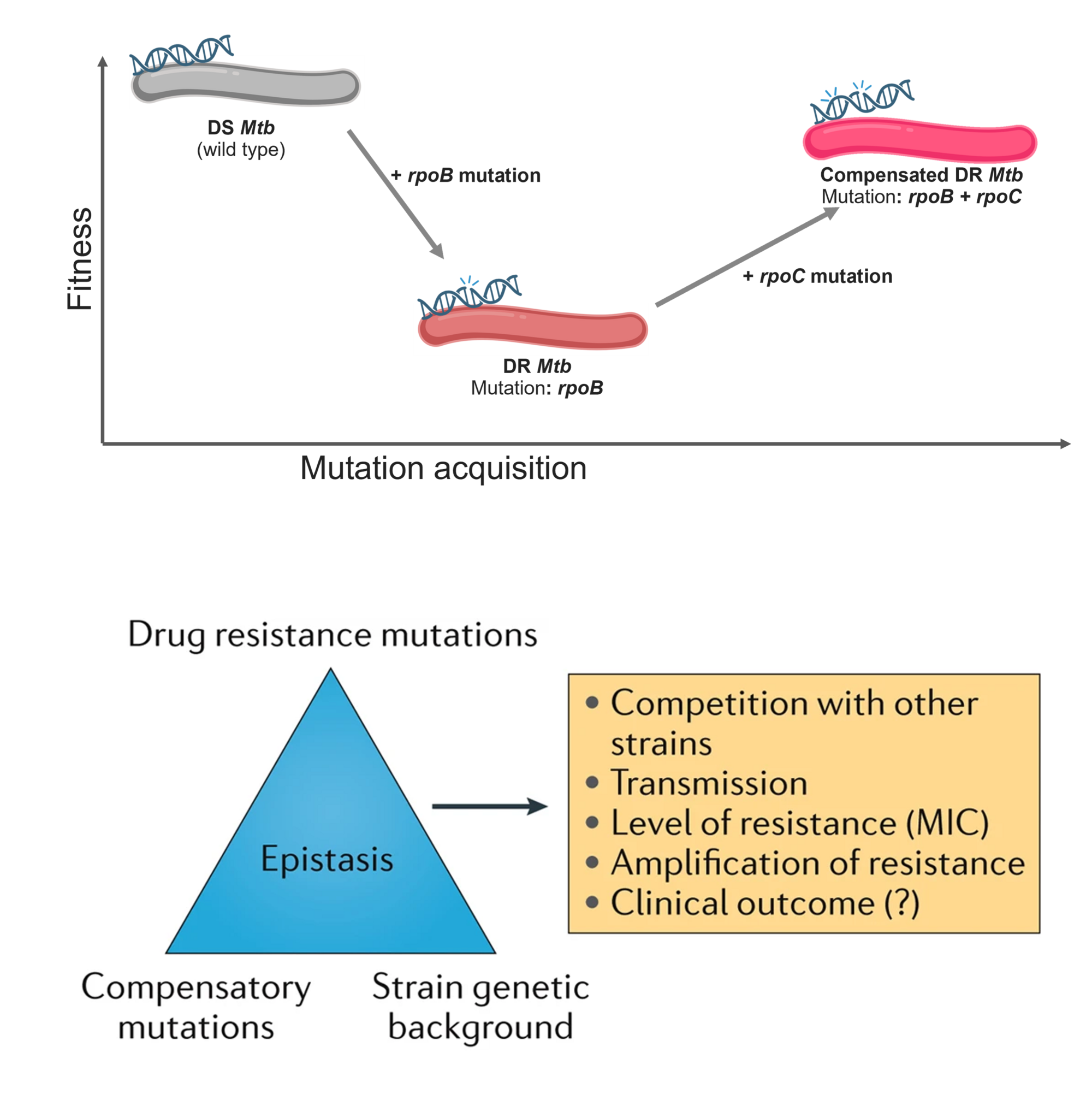Evolution and Ecology of Drug-Resistant MTBC

Fitness Effect of Drug Resistance
We use a combination of experimental evolution, molecular epidemiology, comparative genome sequencing of clinical strains and systems biology to investigate the emergence, evolution and impact of drug resistance on the MTBC. In the past, we were able to show that different drug resistance-conferring mutations are associated with different effects on strain fitness. These differences are reflected in the relative abundance of each mutation in the clinic.
Compensation of Fitness Effects of Drug Resistance
In recent years, it has become clear that the molecular mechanisms of resistance to antibiotics are complex, and that many of the mutations involved can interact epistatically. Starting from the observation that drug-resistant strains isolated from patients tend to be fitter than strains generated in the laboratory, we were able to identify compensatory mutations in the RNA polymerase which mitigate some of the negative effects associated with rifampicin resistance in the MTBC. We published that in South Africa, compensatory evolution was associated with increased transmission of rifampicin resistant strains. Recently, we showed that compensated multidrug-resistant strains in Georgia show equal clinical fitness to their drug susceptible counterparts.
Epistatic Interactions in Drug Resistance
We have been exploring how epistatic interactions between different drug resistance-conferring mutations, compensatory mutations and the strain genetic background influence the fitness of multidrug-resistant strains. Using in vitro selected rifampicin resistant mutants, we showed that the effect of the same mutation has different phenotypic consequences depending on the strain genetic background, indicative of some underlying epistasis. More recently, we also demonstrated that mutations conferring resistance to rifampicin and fluroquinolones interact epistatically, and can have positive, negative or neutral effects on strain fitness depending on the strain genetic background, indicative of an epistatic triad comprised of interactions between strain genetic background, drug resistance mutations and compensatory mutations.
Ongoing Research
Ongoing work in the Unit explores the genomic and phenotypic characteristics of highly successful drug-resistant strains circulating globally, alongside mutations that potentiate the path to drug resistance acquisition.